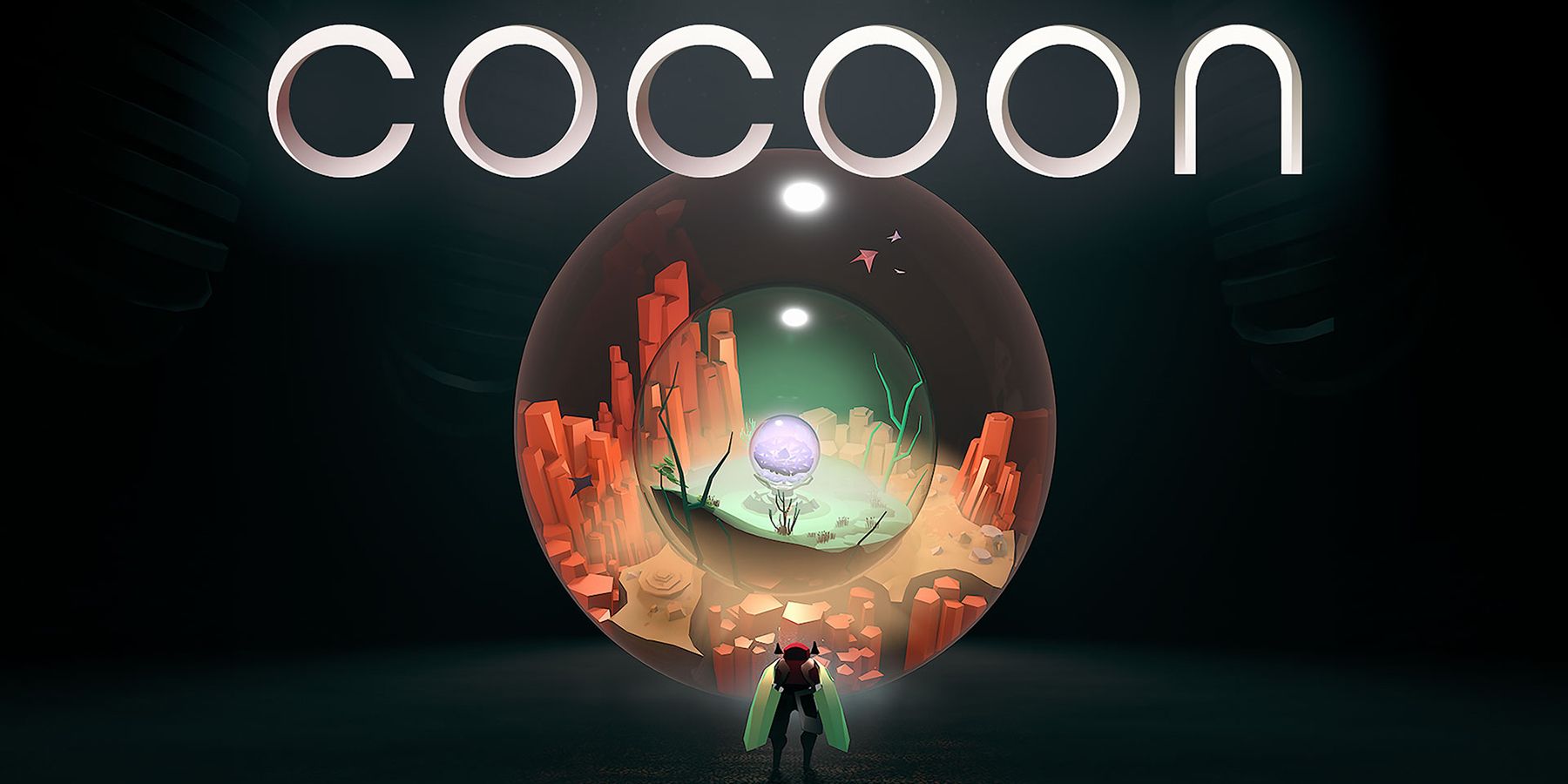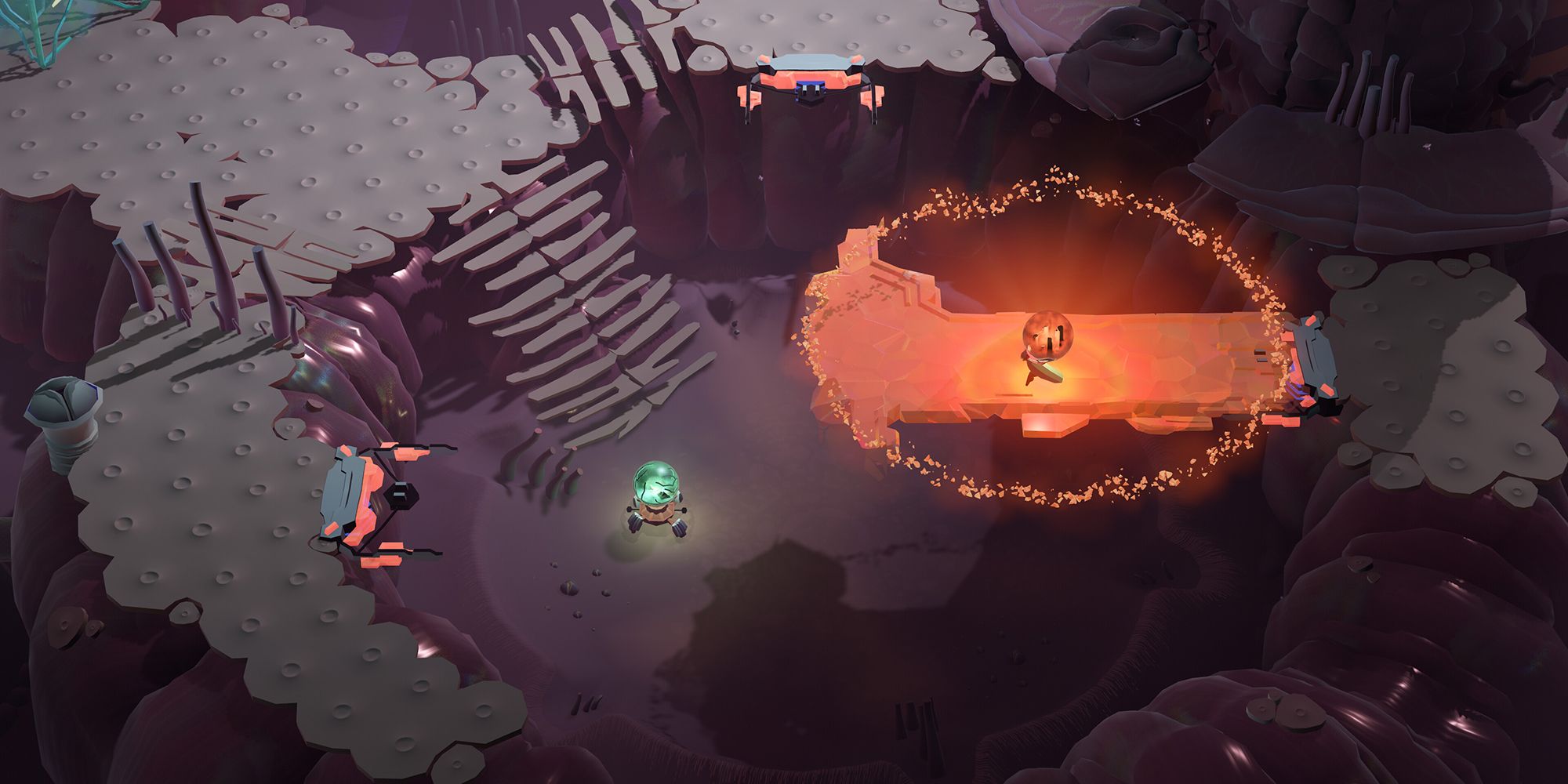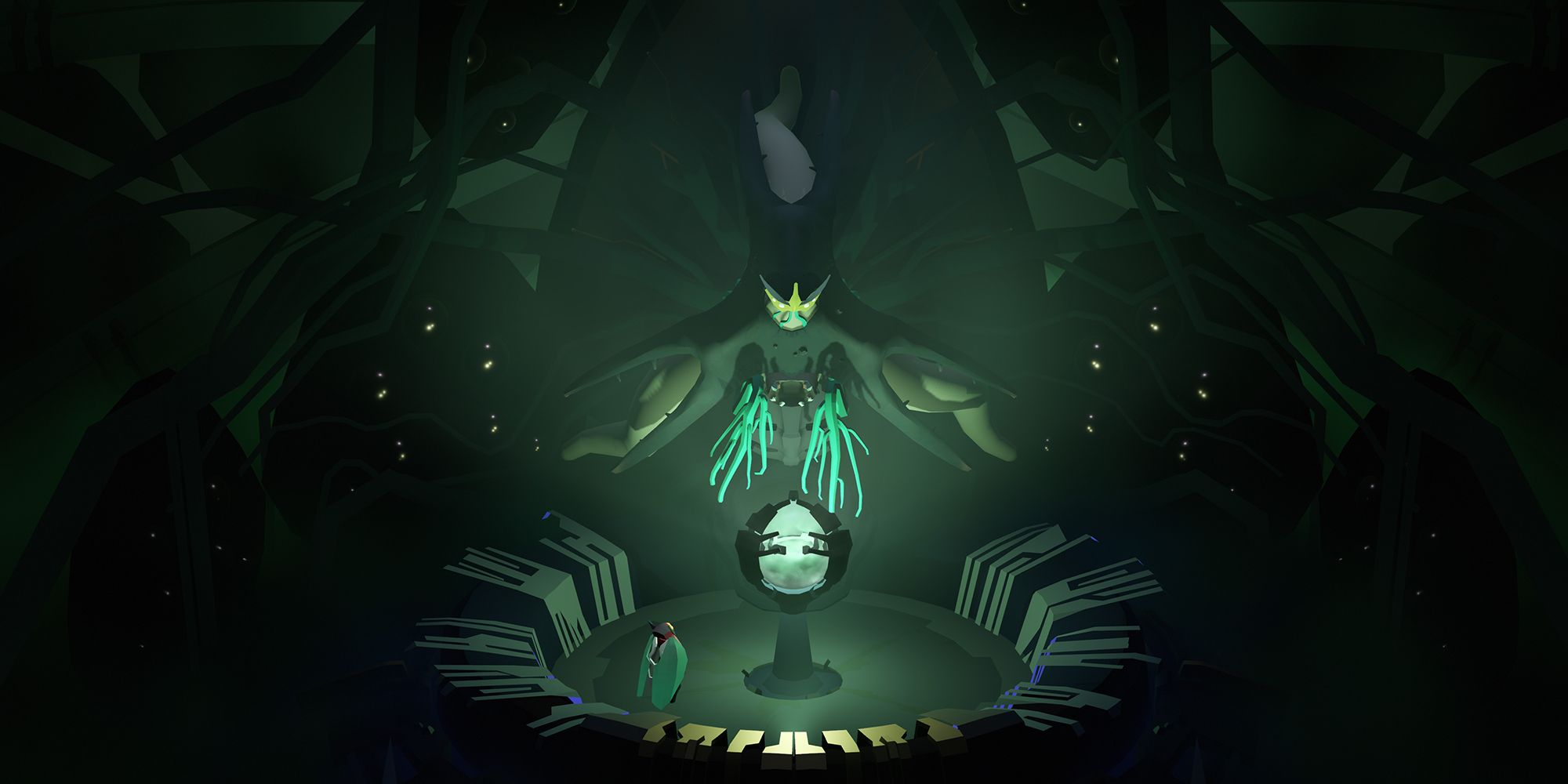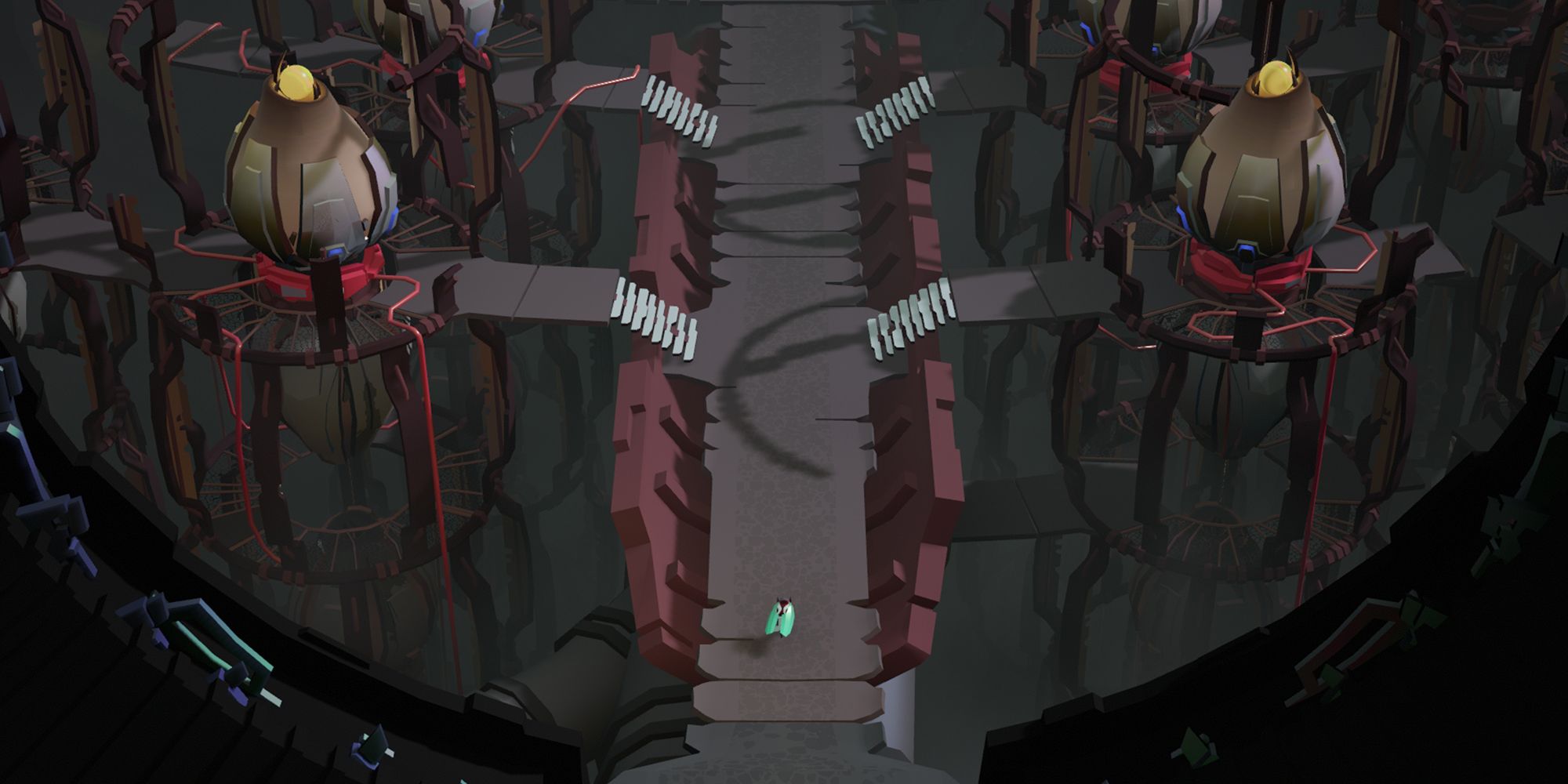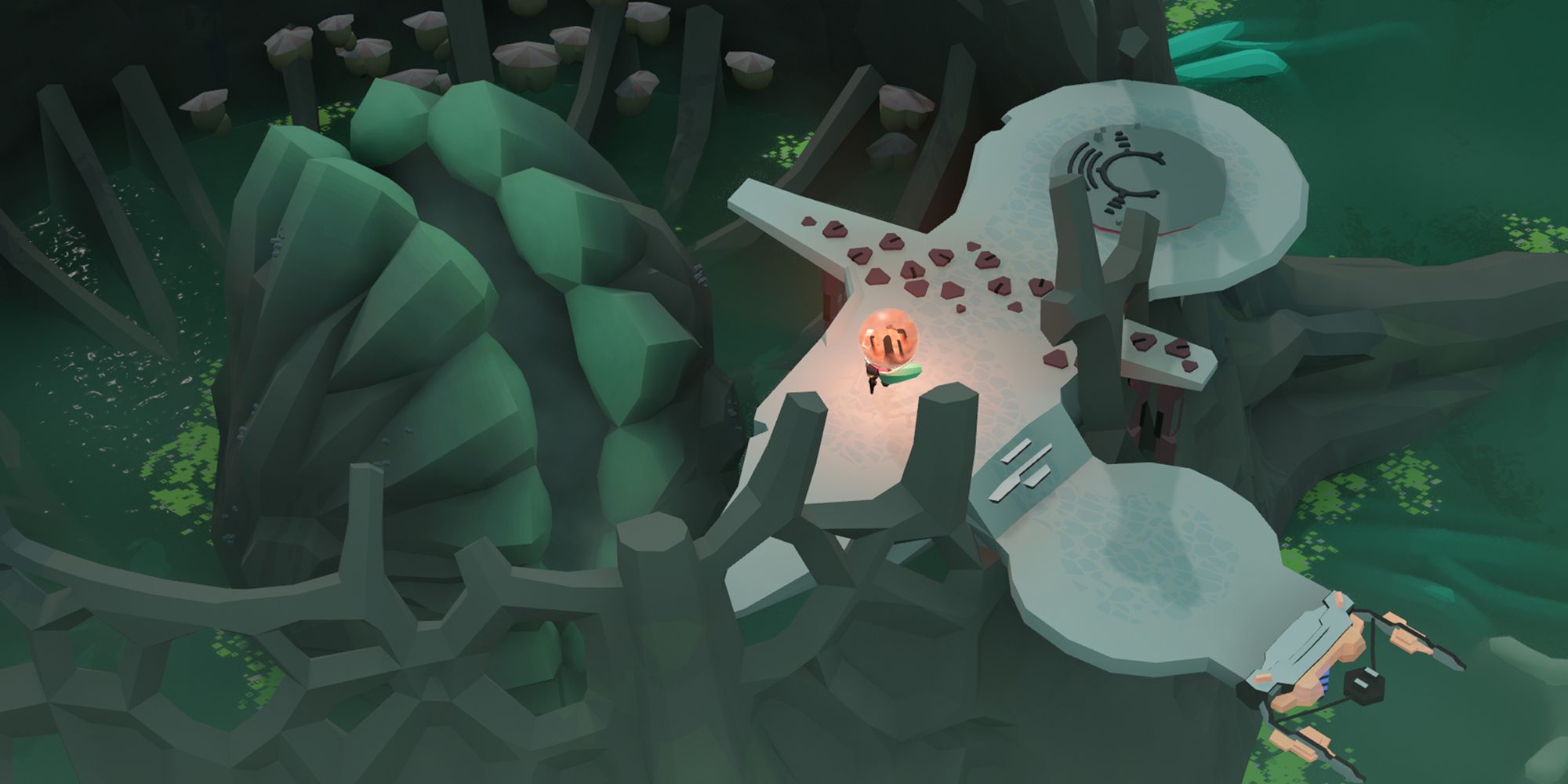In September, indie studio Geometric Interactive by game designer Jeppe Carlsen of Limbo and Inside fame released its debut puzzle title. Cocoon is a mind-bending game that revolves around worlds nested within worlds, and these worlds are not only unique environments but tangible items that can be carried into each other to solve puzzles. Since its launch, the indie title has been highly praised and well-received.
Game ZXC recently spoke to Carlsen and other members of Geometric Interactive's creative team about the development of this high-concept puzzle adventure. The following transcript has been edited for clarity and brevity.
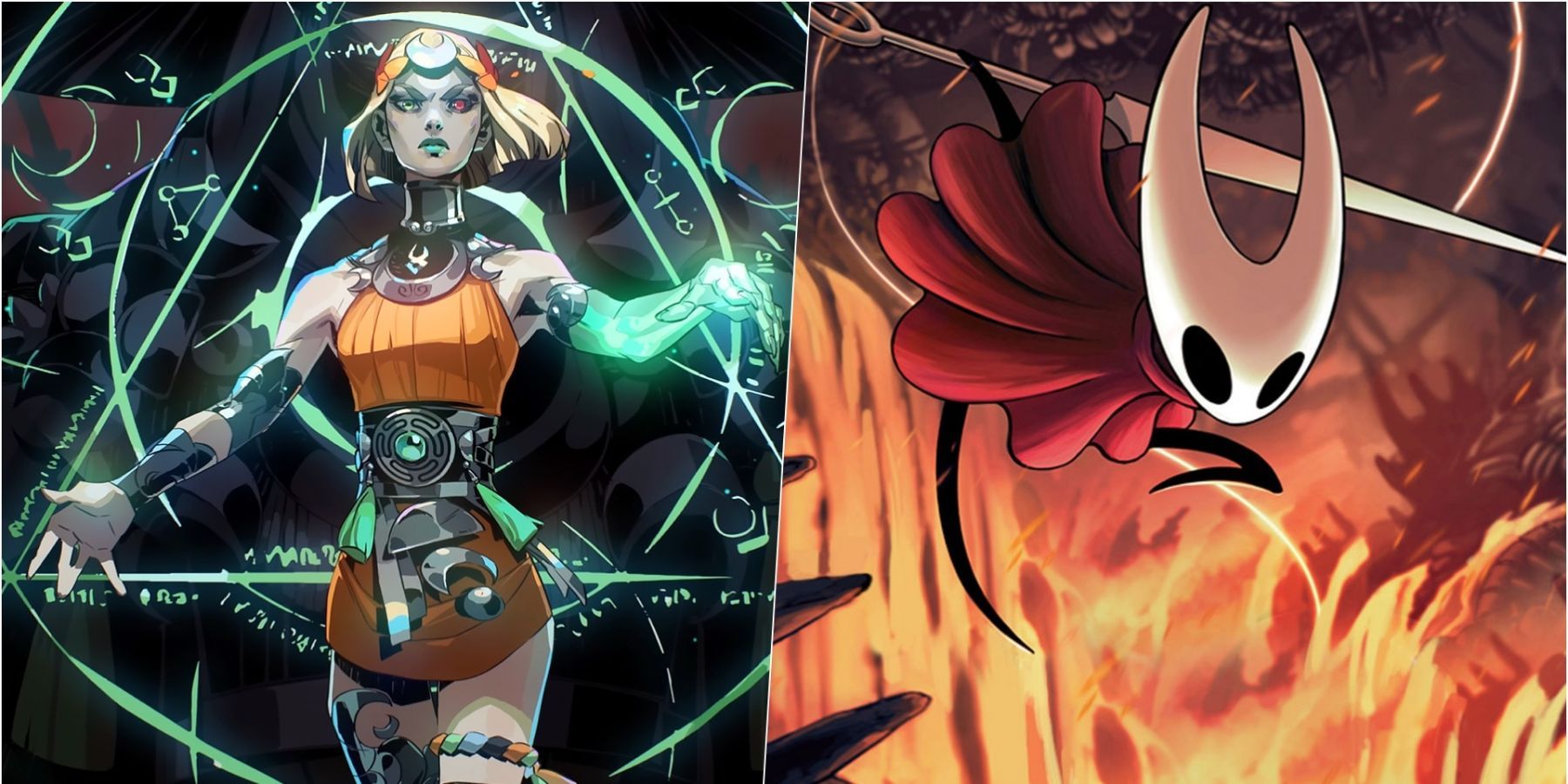
Hades 2, Hollow Knight: Silksong in 2024 Would Be a One-Two Punch for Indie Games
Hades 2 is going to set a high standard for indie games in 2024, and it would be a landmark year for them if Hollow Knight: Silksong joins it.
Q: Please introduce yourself and share your favorite puzzle game, apart from Cocoon.
Jeppe Carlsen: I can start. It’s a very boring, clichéd answer that also depends on the definition of a puzzle game, I guess, but my favorite game ever is Ocarina of Time. I think it just hit me at the right age, and it was also an introduction for me to everything Nintendo. Before that, I had grown up with Commodore and Amiga, and I eventually started playing games on PC. At some point, I got a Nintendo 64 and Ocarina of Time, and it was really mind-blowing for me. It was a style of game and a scale of adventure that I had never seen before. I would say it is also a puzzle game. That’s gotta be my pick. And yes, I am Jeppe, the game designer and game director at Geometric Interactive.
Erwin Kho: I have one! I have one. I’m Erwin, the Art Director and Art Lead for Cocoon. The reason it took me a while is that I don’t play that many video games, I don’t play that many puzzle games, but I think Fez would be the one for me that I really enjoy. The whole indie game scene was finally coming into the spotlight. I think seeing what they did, with respect to bringing the third dimension into a 2D pixel graphic style, and how they utilized it for world exploration was super, super fun. People tried to give the medium a new, fresh coat of paint and make it their own. I thought it was just mind-blowing.
Jakob Schmid: I’m Jakob. I was the audio lead and programmer of Cocoon. I was first going to say Braid, but that’s such a boring answer, so I’m going to say Lemmings. That’s my favorite puzzle game. I played that as a kid. It’s great. It has a lot of cute little guys in it that you have to rescue. I love it.
Q: Without spoiling too much, how would you describe Cocoon to gamers who have yet to hear about the title?
Kho: it’s a game where you find orbs that are worlds, and inside those worlds, you find other worlds.
Carlsen: [Laughing] It is a little bit of a hard game to explain. I think that’s evident from when the press eventually started playing Cocoon, there were many outlets that said it was very hard to describe, but when you played, it just made sense. It is a little hard to explain. It’s a Sci-Fi adventure about worlds within worlds, and using the hierarchy of worlds to solve interesting, unique puzzles. Your mind has to get used to this new way of thinking. That would be one way to describe it.
Q: How did you come up with Cocoon's core 'universe juggling' mechanic? Was the game built around the concept, or did it arise during development?
Carlsen: That concept was the reason for making the game. Even before there was a company, that was an idea—it’s hard to remember how it popped up, but it popped up at some point, and it was a pure gameplay concept in my head. I started talking to Jakob and some other friends about a game where the levels are also objects that you can pick up, enter and exit them, and different puzzles would require you to bring them into each other in specific ways.
It took me quite a while before we started working on the game. But it was an idea that I kept coming back to, over and over, and every time I came back to it, I would have a new idea that sort of added on to what felt great about it, and it became even better. It was an idea that kept growing and refining over time. So when Jakob and I founded this company to explore this idea, I was so ready to go. In three or four months, I built puzzle after puzzle after puzzle extremely quickly. It was all colors and squares and labyrinths at that time, but it was to just see if those conceptual thoughts translated into a meaningful game. And luckily, they did.
That early prototype—hopefully, it still exists somewhere, videos at least exist of how it worked—but several puzzles from that original prototype made it into the final game. Some of them with some refinement, but some are quite similar to their original versions.
Kho: One of the early puzzles where you learn to use the hierarchy of worlds to warp out—because I played the prototype that he just mentioned—and that initial puzzle where the barrier comes towards you, and you have to warp out to escape it. I remember when I played it, it made me laugh because I realized what you needed to do—jumping to a different level in the hierarchy—and it seemed very clever and fun.
Carlsen: It was fun to see that old prototype compared to the final game. But to answer your question, the idea came first. Before anything else—even before the company. When we started working on the game from that early concept, I had no idea what the game would finally become. Because there is a big difference between having a sort of mechanical idea and for that to become the full-fledged game that it eventually is, is a completely different journey in a way.
Erwin obviously had a big part in figuring out the style, story, and tone, and how to build these atmospheric worlds was something that I had completely not imagined what Erwin came up with. So to say that it was a very collaborative and iterative process of how to turn the initial little seed of a mechanical gameplay idea into a proper full adventure game.
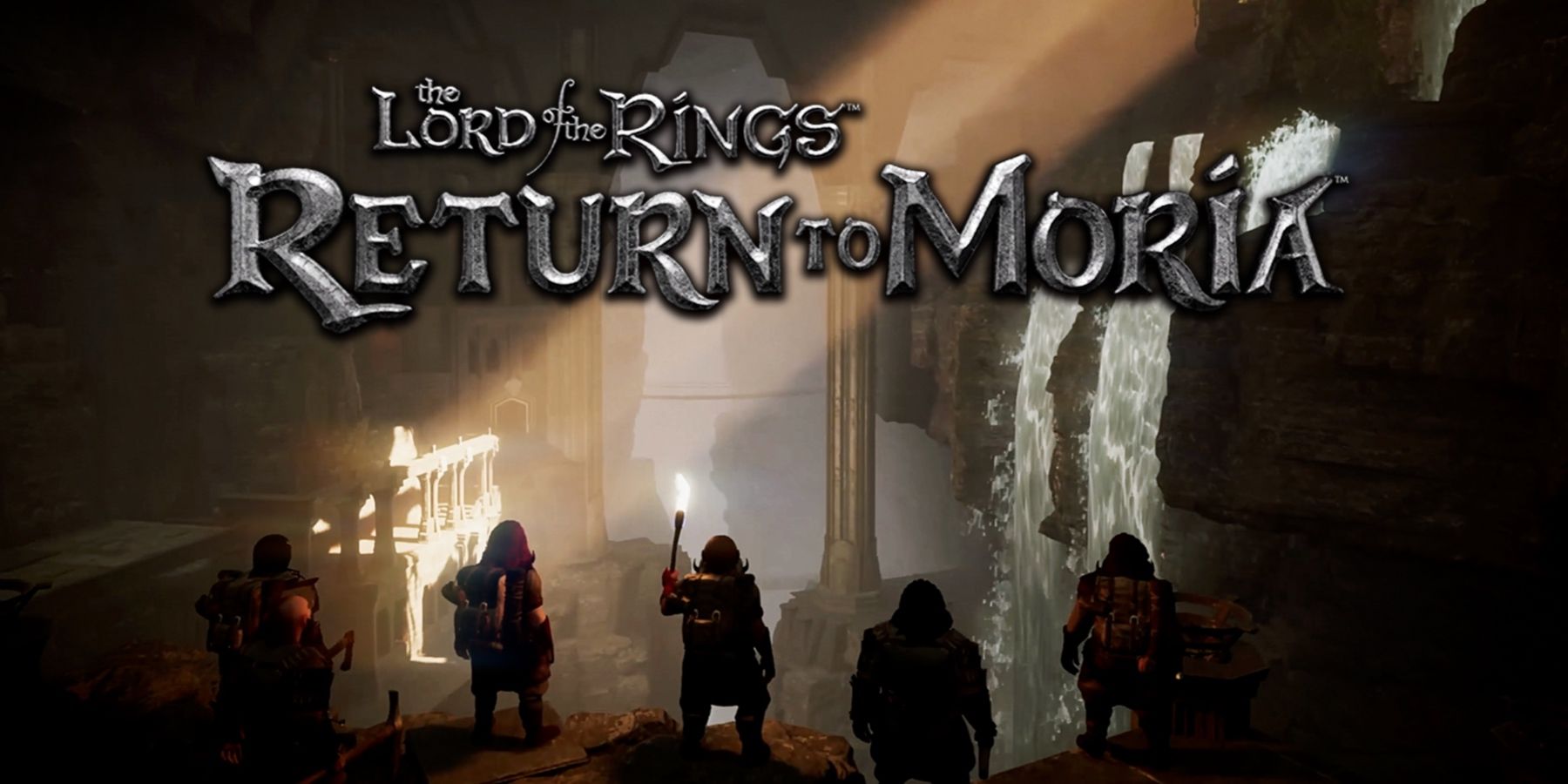
The Lord of the Rings: Return to Moria Gives a Unique Look at Middle-earth
The world of Lord of the Rings has had many game adaptations, but Return to Moria offers a completely new view of Middle Earth.
Q: Cocoon doesn't feature conventional combat with HP or character death, and the game's boss fights play more like puzzles. How many iterations did you go through developing this approach to fights?
Carlsen: Oh man, I can tell you that bosses were very, very difficult to do. It was extremely time-consuming to make just one of them. Eventually, I sat down and did the first one, which is also the first one you encounter in the game, the sort of Wasp Queen kind of creature. It’s also the simplest one with the fewest stages and features, and it sort of set the tone for how boss fights would work in this game.
I very quickly realized that I didn’t have time to do the rest of them. It would have been impossible. Because I am the one who is doing all the other puzzles in the game and doing this sort of mind-melting map of how all the puzzles were stitched together across all the different worlds, it was absolutely impossible. I did the first one and said, “I’m not going to do anymore.”
So, we got an amazing game designer and programmer named Asger Strandby, and then he did the three next ones. The last one is a little bit of a hybrid between some of us. Generally, it was a very iterative process to do them. For some of them, I might have an idea—for the water world one, I thought maybe the first half of the fight takes place on the ground, and then you get this water jet pack. The next half of the fight will take place in the air and you have to dodge bullets, but that was basically my pitch. Everything else is Asger. You have to lure the boss and trick him into hitting the right cannisters which are hiding the jetpack orb, and so forth.
Asger’s work with the teleport boss—where you can teleport your position—was also the initial pitch for the teleport mechanic. There was a lot of discussion in that process. It is rather difficult to make a boss, very difficult, and the last boss was mostly Asger’s going solo: the boss with the four legs that you have to destroy one at a time. It was a super fun one I think and very complicated to do.
Lots of discussions. What we tried to do was make sure the boss would have some sort of relationship to the world that it is in, but also the orb ability that you unlock after beating the boss. The teleportation boss fight was very clear. In the fight, you have a teleportation device, but once you’ve defeated the boss, you gain the teleportation ability with the orb. So there is also a conceptual tie—because you can make a boss anything—to make it coherent with the rest of the game. For the ability to shoot bullets, you yourself are sort of a bullet firing around the arena, so we wanted there to be an internal logic to it rather than it being completely random.
Q: Cocoon has very simple controls but a great many mechanics. How do you maximize the amount of variety available to players while also keeping the controls broadly accessible?
Carlsen: It’s… a lot of thinking [Laughs]. A lot of thinking goes into that. The way I went about it was—I was trying to search for the most minimalist additions to the game design that I could get the most out of. One example of this is the core interaction to pick up orbs and put them down and the ability to jump into them. But early on, we came up with the idea to have an orb that did not contain a world within it, which we called a utility orb. Its purpose was to just interact with the landscape.
We could tether this orb to different objects. We have this container with legs, that I think is really cool, and the orb is like an eyeball that you can pull to lead the entire creature. But from a game design perspective and game code perspective, you are still just picking up an orb and putting an orb down. Suddenly, it feels very different. That’s a good example of a very minimalist example of the game code and game design that allows us to do all sorts of other interactions. We used tethered orbs as joysticks to do remote controls, pull creatures, and all these sorts of things.
I do that because it adds consistency to the game. It gives it a stronger identity and makes it more intuitive. Because every time you see an orb-shaped object, you go and press the button, even if it’s a new object you haven’t seen before. Also, this minimalist approach saves time with implementation.
Q: Cocoon's architecture isn't minimalistic, given the detailed apertures, switches, and other mechanisms, but it does feature a degree of abstraction reminiscent of games like Journey and Monument Valley. How did you go about developing the general aesthetic of Cocoon?
Kho: The aesthetic was very much an extension of the 3D illustration work I did as a freelancer before I started working on this project. I would make this low-poly very colorful work which is very much inspired by early CGI models and early computer games from the 90s. As I was exploring that style in my own career, it got picked up by some small studios because they recognized there was something very digital, a video game aesthetic to it. One of those jobs led me to get in touch with these guys over here.
For Cocoon, we noticed that the sort of low-poly work that I would usually do, filling an entire screen with it felt really empty. It doesn’t hold enough detail. I really wanted to keep the geometry very clean and very minimal, but I wanted it to feel finished and sophisticated at the same time. I didn’t want to add detail by doing texture painting in Photoshop and then mapping it because I don’t like doing that. It’s very tedious work, and it’s also a lot of work that you need to do. We knew from the get-go that we needed to make a lot of landscapes and wanted them to look quite diverse and very unique.
I tried to look for a way to quickly add a level of detail to the models without hampering the workflow. The level of detail you see in the game is thanks to this technique that we call vertex painting. We wrote our own shaders, our own materials where we can add data to the RGB channels of the different vertices, and that gets translated into different textures and colors on the models, which gives them a layered-ness when painting. That was a nice way to make the landscapes feel very full and very detailed, but at the same time, there was a pleasing minimalism to it that created its own aesthetic.
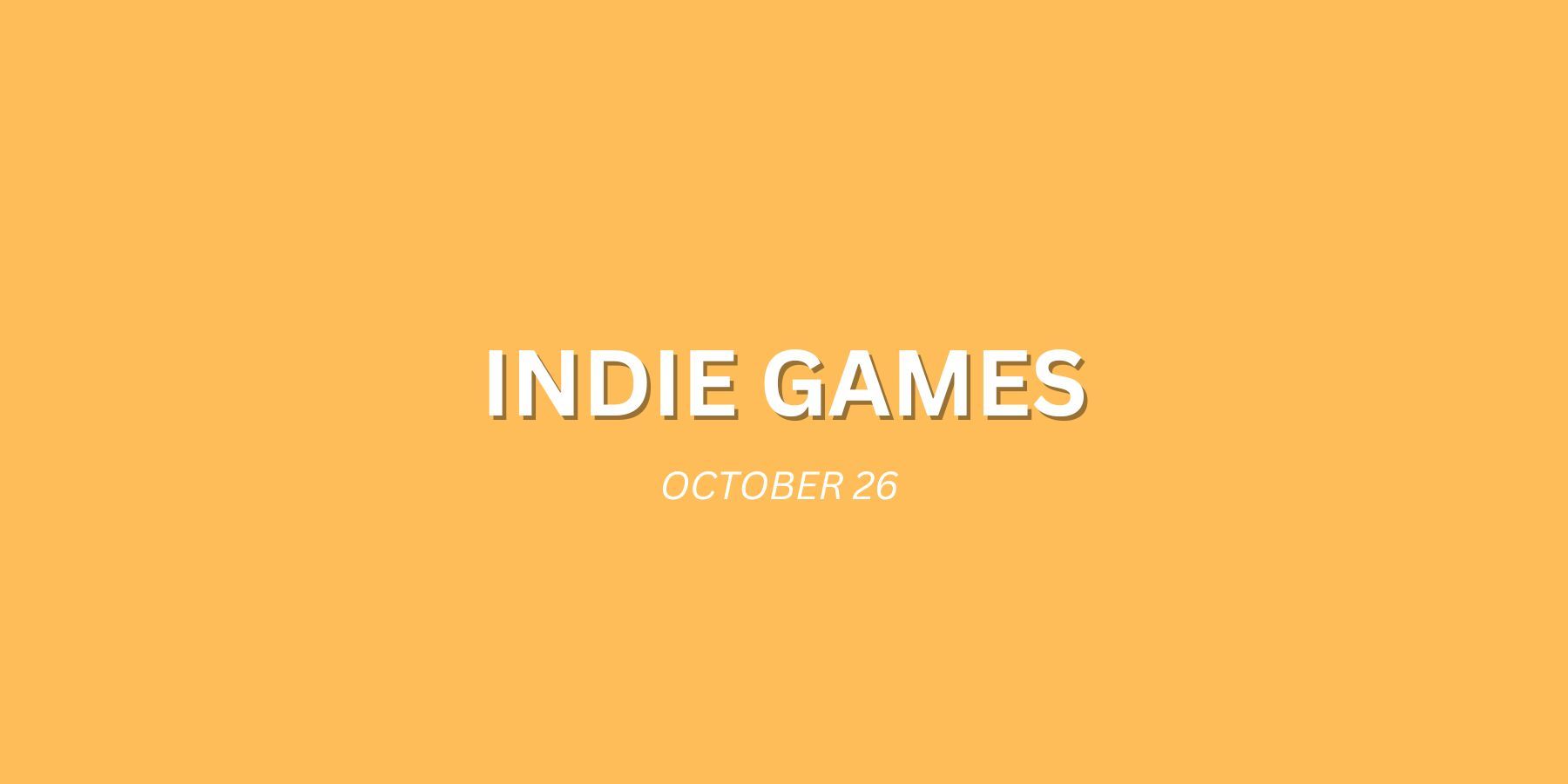
October 26 is a Big Day for Indie Fans
For players constantly searching for interesting indie titles to play, October 26 is going to be a noteworthy day that should be on their calendar.
Q: Similarly, the character and boss designs have a unique, insectiod/biomechanical appearance. How early on in the development process did you come up with this look?
Kho: Early-ish, but not right at the get-go. The insectoid, biomechanoid look very much came forth out of the character design. The original design we had walking around in Unity was an astronaut with a cape. It already had slightly insectoid features, but it was definitely more like an astronaut with a gold-plated helmet. At some point, I just wasn’t very happy with the design, and I wanted to push things further.
I leaned into the slightly insectoid appearance more, giving it little antennas and turning the cape into full-fledged wings, and it also worked together with the story we were developing as we were bouncing ideas back and forth like “Why are you this character and holding worlds on your back?” Once the character design was something I was really happy with, the sort of insectoid, biomechanoid-inspired world just flowed out of that quite quickly.
The boss designs were really fun to do. We wanted them to look somehow related to the main character, but also give them a unique look. So you’ll see some elements that sort of all tie them together but also reflect on their environment.
Q: Much of the game's mood and narrative atmosphere is conveyed through the game's music and ambient noise. How did you go about the audio design for Cocoon?
Schmid: I was thinking I probably have to do all the audio myself. I am more of a composer than a sound designer, so I thought maybe I could make synthetic music based on synthesizers rather than any recorded sound because that is my strength. At the time, I was also watching the '80s Dragon Ball original series at the time. I noticed all the sound effects were based on synthesizers and it doesn’t sound realistic at all, but it works. And I thought, “Maybe this could work for our game as well.” I had some early successes, but it took so long that we ended up hiring some amazing sound designers who took this idea to a whole other level. All the sounds you hear in the game are synthesized. There is not a single recorded sound.
I wanted to do something for the puzzles specifically. I’m a little bit allergic to looping music in games. It annoys me. I wanted to make something that never repeats, and I was thinking about how to write synthesizers at that time as well. I wrote some plugins that actually play the ambient music for all the puzzle sections in real-time. The music you hear when you are thinking about a puzzle is generated randomly as you play along, and I’m very happy with where that ended up. I was a little nervous. Is this even going to work? Is this going to run on a console? But it ended up working, and I’m very happy about that.
Q: Developers have done so much with puzzle games, but Cocoon demonstrates that there are many unique concepts we have yet to explore. How do you go about designing unique puzzle experiences?
Carlsen: Yeah, I don’t know. I think, production-wise while working on a game like Cocoon, we aren’t really playing other puzzle games while making it or looking to them for inspiration. But I’ve been designing puzzles for a very long time, so this was not something new for me. The way I go about it is that I crawl into a “puzzle bubble” of sorts and just try to think of different ideas, and how I can present problems that seem new and that I have not seen before.
It’s not a very research-y go out and play lots of puzzle games kind of process. It’s more like an internal daydreaming type of approach. Just walk about and think about puzzles. I would also say that most of the puzzles and most of the best ones in Cocoon are not made in front of the computer. Of course, they are built and tested in front of a computer. Many of them are from me just thinking about puzzles while walking around the street and trying to play around with the concepts of what’s possible with worlds within worlds. I think that’s often how my best ideas pop up.
It can be very hard to just sit in front of a level editor with some tools and design something that is truly unique and interesting. Like, you can build puzzles that technically do the job, but for me at least—I can only speak from my personal experience—I need time away from the computer. I think some of the uniqueness comes from insisting on solving all the problems ourselves. Just evaluating “why is this not working” or “how can this be better” without really playing other puzzle games.
Also, as someone who has been designing puzzle games for more than 13 years, I’m not super keen on playing puzzle games myself. Not the hardcore ones. I respect them a lot, but all these extremely difficult games—I just don’t have the patience. If I put in the effort to solve a difficult puzzle, I want the payoff to be grand. Not just “Hey, you did it!” There needs to be something. That’s the motivation of many of the puzzles in Cocoon. There needs to be a payoff. Obviously, the payoff is progressing through some fantastic-looking, interesting places. A payoff can also be an “aha” moment. It’s a very special thing.
But when it comes down to doing a difficult puzzle due to a very complicated state machine, something with a wide variety of states you can create, and you have to search for the right one—that to me feels like work, and I don’t appreciate it personally, as much.
That’s also the approach to the puzzles in Cocoon. They should not be overly complex. And the reward—the payoff—for solving them should also be very big.
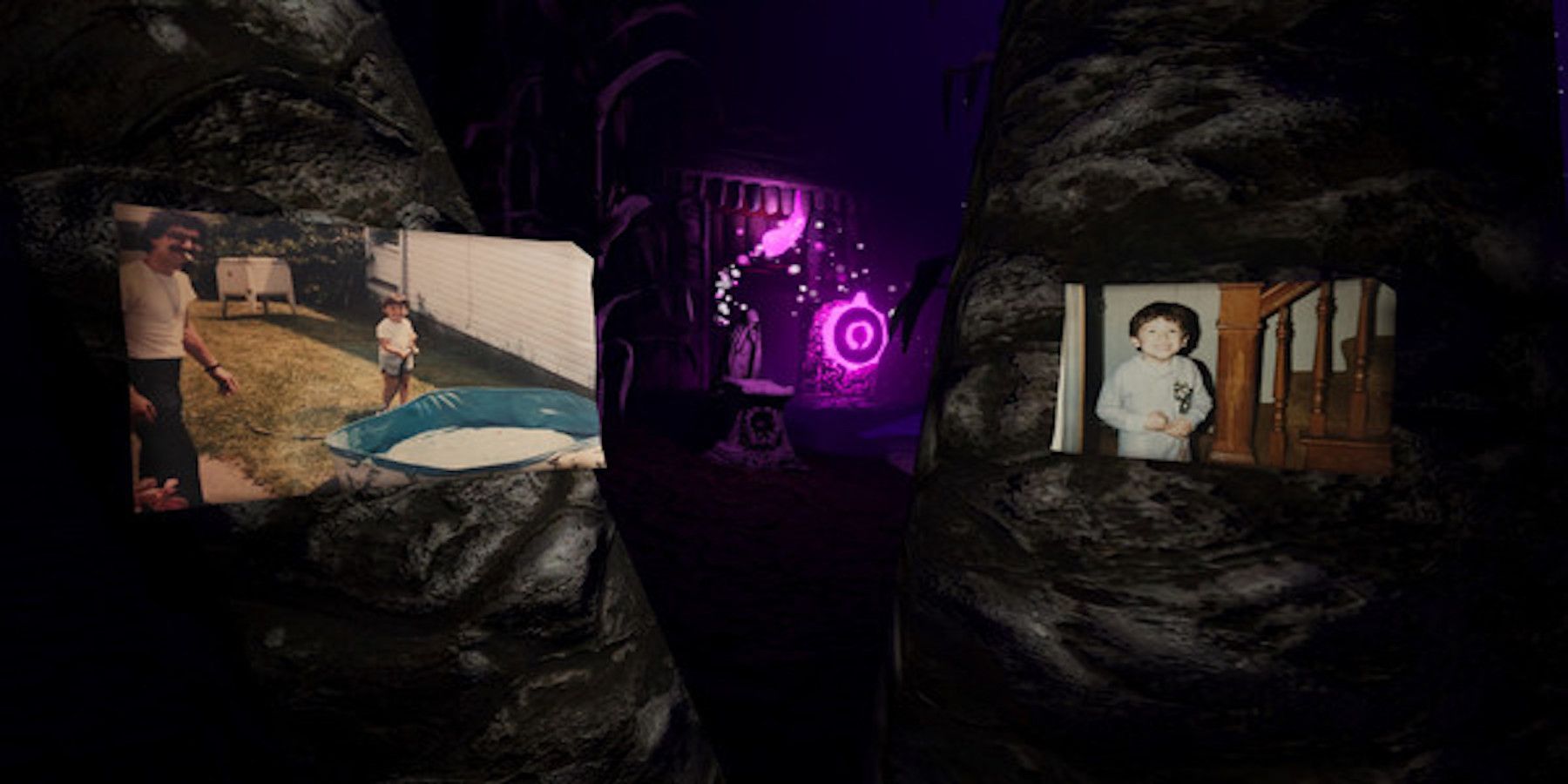
Valley of Shadow Fills 'Human Connection' Gap In Video Games, Co-Creator Says
Synersteel developer Anthony Vaccaro talks with Game ZXC about how Valley of Shadow attempts to fill a 'human connection' gap in video games.
Q: There seems to be a concerted push for volume of content in the gaming industry, but Cocoon is a briefer, more focused experience. How did you settle on the length of the game? Were there any puzzle mechanics or sections of the game that you decided to cut?
Kho: Oh god [laughing].
Carlsen: There were sections that were cut, but…
Kho: …they were cut for the right reasons.
Carlsen: Cutting things is always nice because there is less to produce, but the main motivator for a big portion we cut from the organic world was pacing. There was an organic vehicle with very long legs that you could climb and park on these different islands. On each island, there would be puzzles to solve. And when you finished the puzzles, there would be a winged key that you could slot into this creature. Eventually, the creature would split apart and fly out of a cave.
Kho: Only the last part is now in the game. It’s in the organic cave, where you have these two little robots with an orb, and they slot into it. Then this thing becomes a jellyfish that envelopes you, it travels for a bit, but it separates and flies to the surface. That’s the ending of the sequence that Jeppe just described, but the entire going-from-one-island-to-another-sequence got scrapped. How many months did we work on that thing?
Carlsen: Quite a bit. Our animator is also our programmer. He coded the legs so that they could create platforms of different heights, so the landscape would be interesting. But each island has to be styled in a recognizable way because you can choose all four of them in a random order. You need to know where you’ve been and where you still have to go, so that was a lot of work on the art side…
My biggest motivator for getting rid of it was pacing. A game like Cocoon is very much about pacing. The pacing needs to be just right to motivate people to go forward. Part of the magic in Cocoon, I think, is that you very rarely continue in one world for very long before you have to continue in another world. All these context shifts of progressing in a different landscape are essential for Cocoon’s pacing to work. And the problem here was, we had this very elaborate sequence that dragged on too long within one world without having that context shift. It was to the point where somebody on the publisher side played this early version of the game and said, “Yeah, I didn’t get all the way through, but I got a good chunk into it.” And I asked, “Can I guess where you’re stuck?” Sure enough, he got stuck in the middle of this sequence because it dragged too much.
So the biggest motivation here was making it feel right. It was about making the pacing feel very tight and strong, and I was more worried about the game feeling a tad too long, rather than too short. It’s partially a personal preference. But the most important thing for us was to make it feel like we were never dragging anything out. We must keep latched onto the player’s attention without them losing interest.
Q: Cocoon has achieved overwhelmingly positive reviews on Steam since its release in September. Given this reception, does Geometric Interactive have any future plans for Cocoon?
Carlsen: We are not planning on adding content or anything like that to the game. We are starting work on a new game. We worked on Cocoon for a very long time. It had a very long production. It’s also not the type of game that is easy to add content to. It is very time-consuming to make content for this game, so we are working on a new game that is in some ways very similar and in some ways very different. We are looking forward to getting started on that.
Q: Is there anything else you would like readers to know?
Schmid: The game is out on all the platforms—except iOS and Android—so everyone can enjoy it.
Carlsen: It’s a very accessible game. I think people who think they would not normally be into this type of game might be surprised to find they are into it because it’s a very accessible experience. There is literally one stick and one button. You can’t see that when watching a trailer for a game, and it can look a little bit complicated.
Schmid: It’s incredibly intuitive. Even later on in the game, you get tricked into understanding some of the more complicated puzzles because of how well-designed they are.
Carlsen: From a game design perspective, this is probably the most complex game design idea that I have ever worked on or made. So it felt natural to me that the more complex you want something to be, the simpler you also have to make it. When you are making puzzles that have a very complex nature, it’s nice to counter that with accessibility.
[End]
Cocoon is currently available for PC, PlayStation 4, PlayStation 5, Switch, Xbox One, and Xbox Series X|S.

